Hydrogen value chains
Clean hydrogen value chains: overview
Clean hydrogen value chains consist of three key stages, summarised in the diagram below: production, distribution (including storage), and end-use applications.
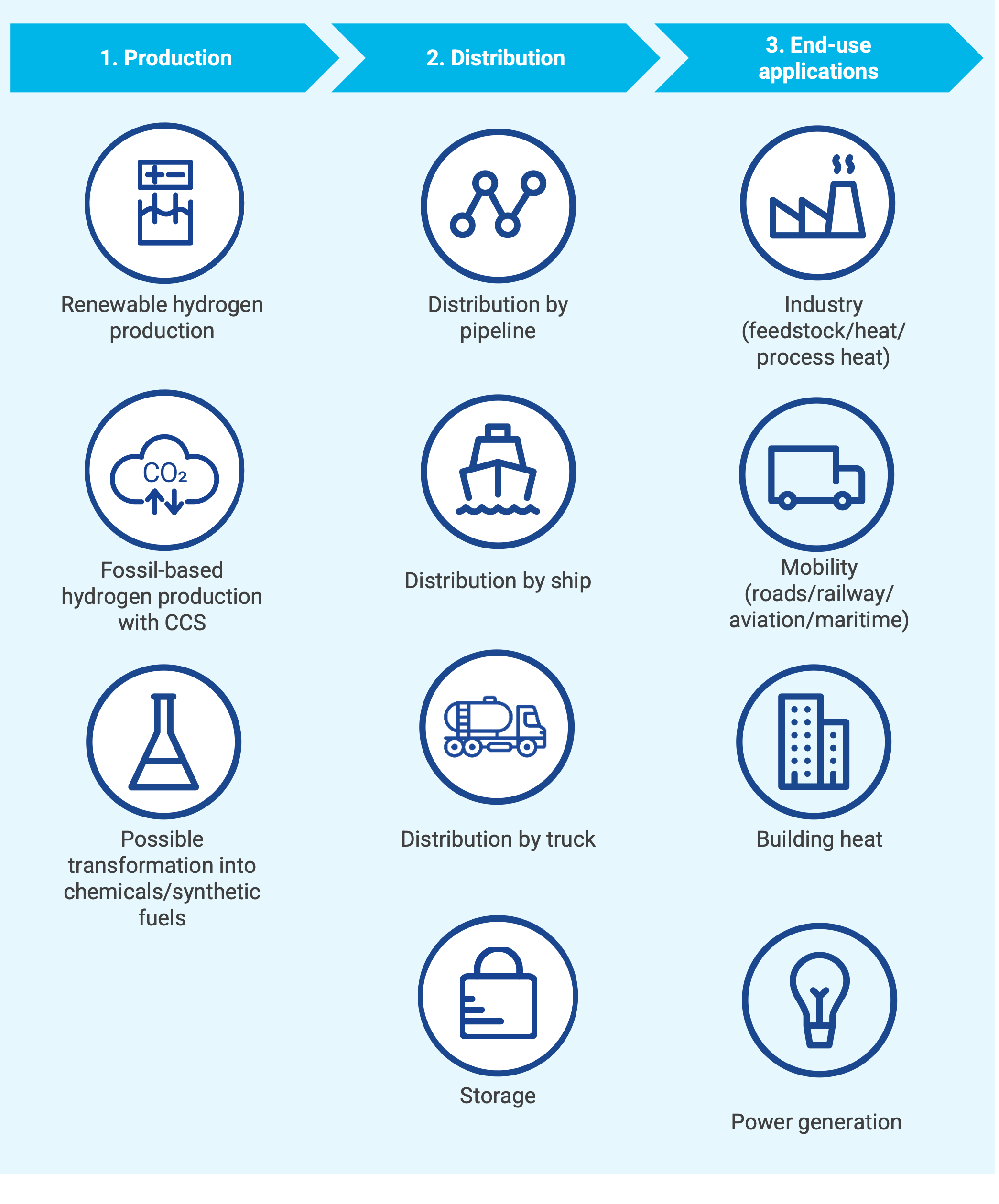
1. Clean hydrogen production
Different production methods are required for each type of hydrogen:
- Fossil-based hydrogen: refers to hydrogen produced through a variety of processes using fossil fuels as feedstock, mainly the reforming of natural gas or the gasification of coal. This represents the bulk of hydrogen produced today. The life-cycle greenhouse gas emissions of the production of fossil-based hydrogen are high.
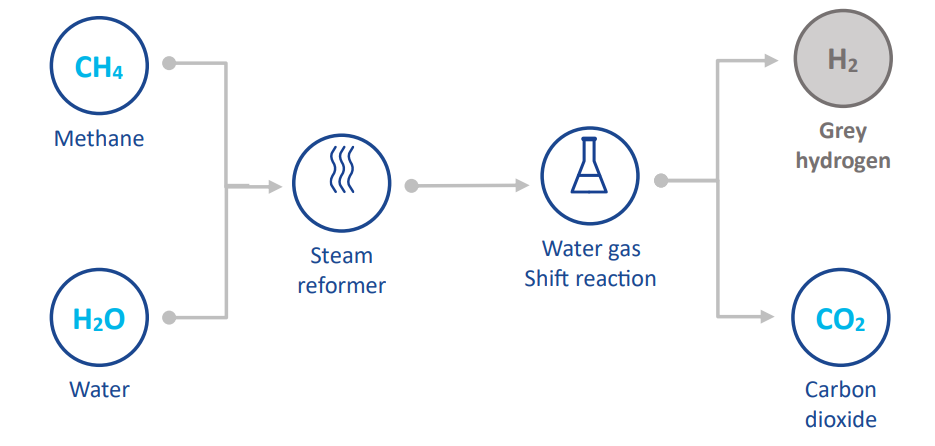
- Renewable hydrogen: refers to hydrogen produced through the electrolysis of water (in an electrolyser, powered by electricity), and with the electricity stemming from renewable sources. The full life-cycle greenhouse gas emissions of the production of renewable hydrogen are close to zero. Renewable hydrogen may also be produced through the reforming of biogas (instead of natural gas) or biochemical conversion of biomass, if in compliance with sustainability requirements.
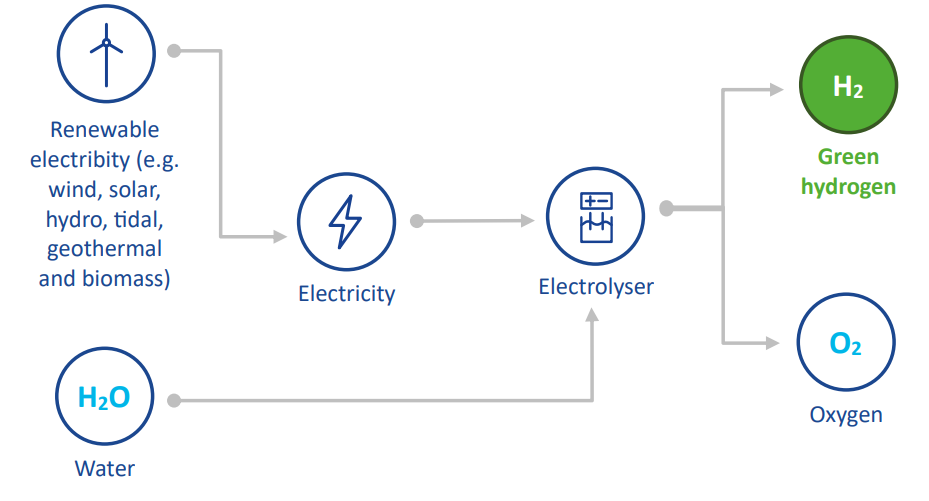
- Fossil-based hydrogen with carbon capture: is a subpart of fossil-based hydrogen, but where greenhouse gases emitted as part of the hydrogen production process are captured. The greenhouse gas emissions of the production of fossil-based hydrogen with carbon capture or pyrolysis are lower than for fossil-fuel based hydrogen, but the variable effectiveness of greenhouse gas capture (maximum 90%) needs to be taken into account.
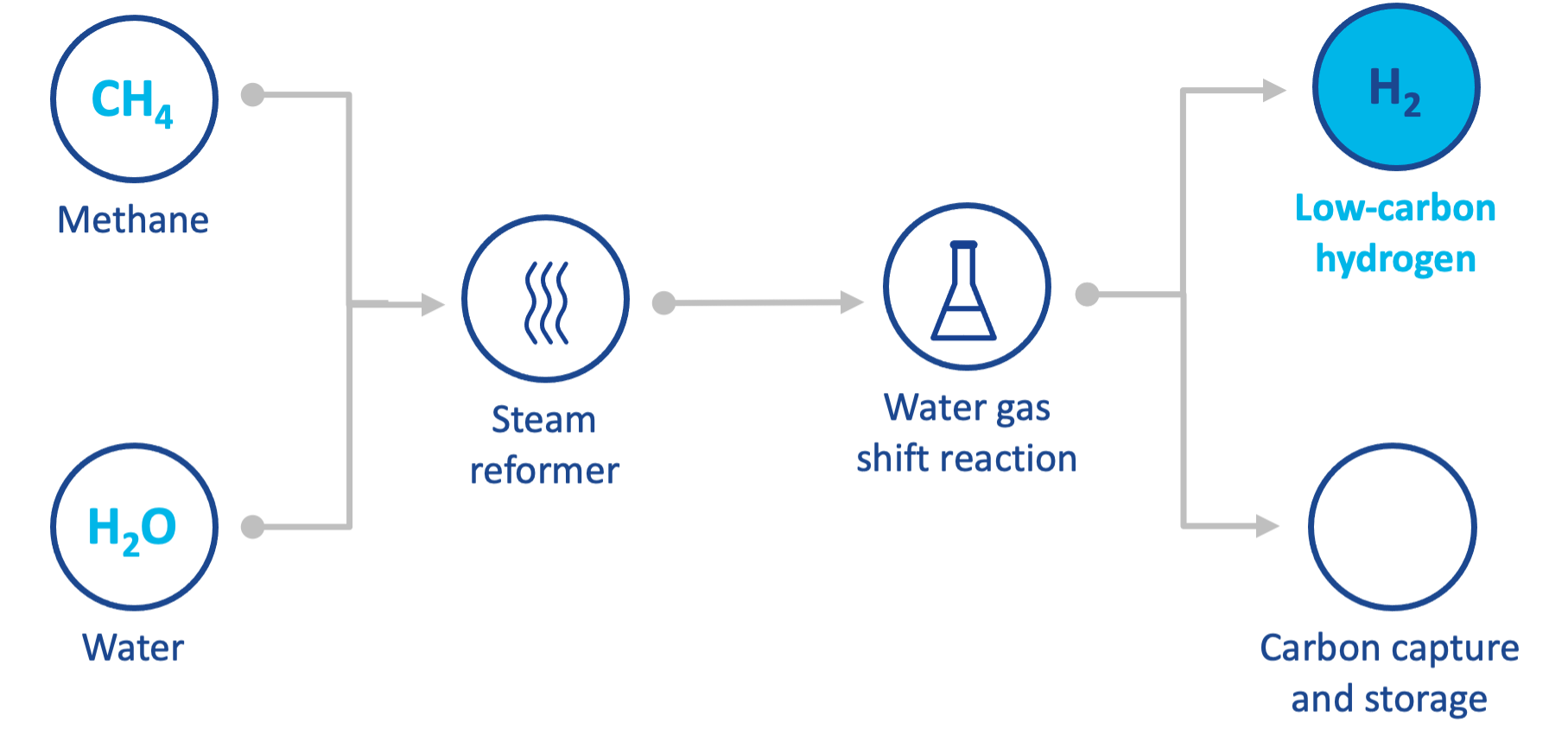
- Low-carbon hydrogen: encompasses fossil-based hydrogen with carbon capture and electricity-based hydrogen (hydrogen produced through the electrolysis of water regardless of the electricity source), with significantly reduced full life-cycle greenhouse gas emissions compared to existing hydrogen production.
Note: Combined with a carbon source, hydrogen can be used to produce a variety of gaseous and liquid fuels. These ‘hydrogen-derived synthetic fuels’ are considered renewable if the hydrogen part of the syngas is renewable. For instance, synthetic fuels include synthetic kerosene in aviation, synthetic diesel for cars, and various molecules used in the production of chemicals and fertilisers. Synthetic fuels can be associated with very different levels of greenhouse gas emissions depending on the feedstock and process used. In terms of air pollution, burning synthetic fuels produces similar levels of air pollutant emissions than fossil fuels.
2. Clean hydrogen distribution (including storage)
Transport and storage infrastructures will play a key role in developing the hydrogen economy in the EU. Hydrogen can be transported and stored in three ways: under liquid (for instance, liquid hydrogen, ammonia, methanol & LOHCs), solid (solid inorganic hydrogen carriers) or gaseous form (gaseous pure hydrogen).
|
Imagem

|
Distribution by pipeline Hydrogen can be transported under gaseous form via pipeline, which is the most cost-effective solution within a certain distance. Current research focuses on improving pipeline safety and sustainability while preventing risks of leaks. The EU is aiming at enhancing the hydrogen economy through infrastructure development such as the European Hydrogen Backbone project aiming to facilitate hydrogen transport. |
|
Imagem

|
Distribution by ship Hydrogen can be transported under liquid, gaseous or solid form by ships. It is the most cost-efficient option for (very) long-distance transport of hydrogen. Although currently not done at a commercial scale, it seems that hydrogen molecules will be converted into movable liquid form (ammonia, methanol, LOHC or liquid hydrogen) and transported on dedicated tanker ships. However, this hydrogen distribution by ships entails significant energy losses, resulting from molecule conversion and potential re-conversion. |
|
Imagem

|
Distribution by truck Hydrogen can be transported under liquid, gaseous or solid form over the road by truck. Hydrogen is transported in large cylinders attached to trucks, under low temperature or highly pressurised conditions depending on the form in which molecules are being transported. Today, this is the most common mean of transportation for hydrogen. |
|
Imagem

|
Overground storage Today, hydrogen can be stored overground in small or medium-size metal tanks. Under gaseous form, these tanks must be kept at high pressure (compressed storage), whereas under liquid form, hydrogen must be stored at very low temperature (cryogenic storage). These storage methods are currently the most widespread in the industry. |
|
Imagem

|
Underground storage Although currently not done at a commercial scale, hydrogen can be stored underground in salt caverns, water-bearing aquifer, or harder-to-access porous rocks. These methods are ideal for storage of large quantities of hydrogen. Underground storage of hydrogen requires a certain level of pressure to be maintained in the cavities to allow for gas extraction operability. |
3. Clean hydrogen end use applications
Clean hydrogen will play a key role in delivering net zero – especially in hard-to-abate sectors. This section gives an overview of expected demand and applications in key sectors.

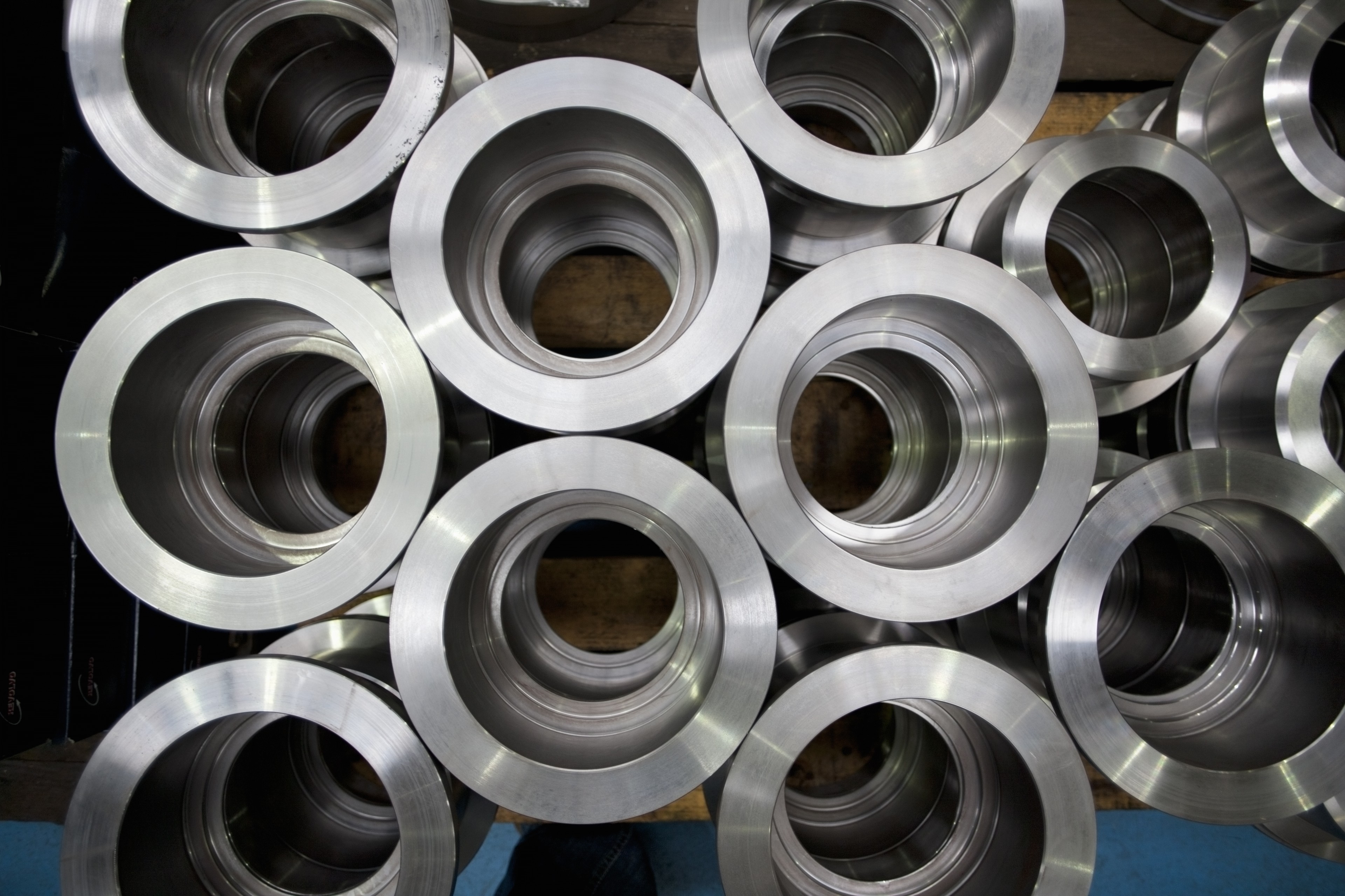
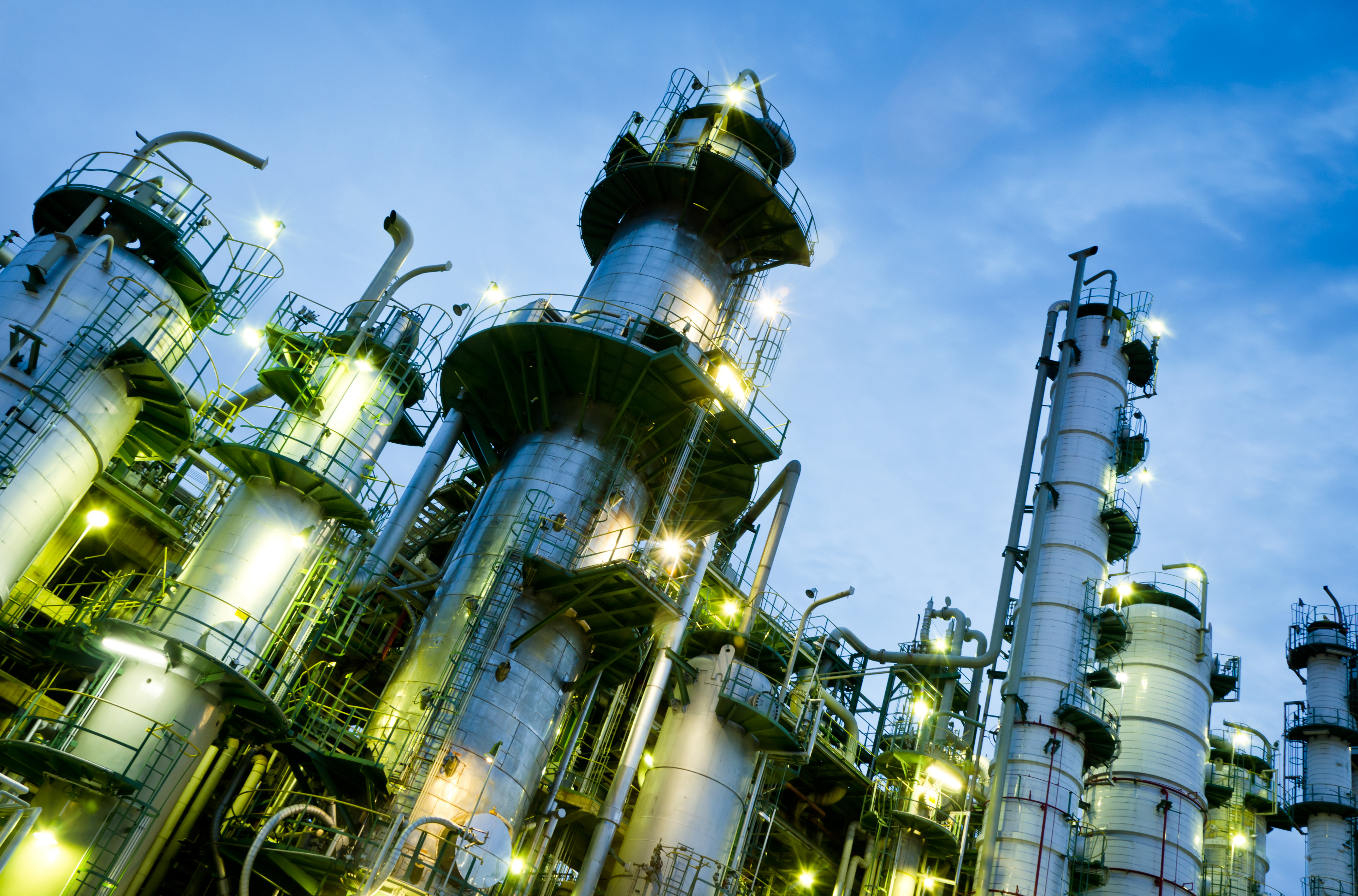



Finally, hydrogen is expected to play a role in decarbonising the following sectors:
- The buildings sector, where hydrogen-powered devices such as fuel cells, boilers, and integrated hybrid heat pumps can be used in those geographical areas where other decarbonization solutions (e.g. thermal insulation, electric heat pumps, heat networks) are not technically feasible or socio-economically desirable.
- The power sector, where hydrogen or hydrogen-based fuels can be used to counterbalance the variability of supply and demand in electricity grids predominantly supplied by intermittent renewable energy sources.

 Log in
Log in
 Search
Search



